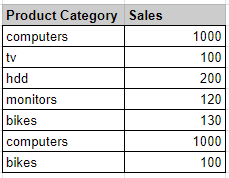
February 4, 2024
Pivot Tables with Pandas: Unveiling Data Insights with Simplicity
In the world of data analysis, pivot tables have emerged as a versatile tool for summarizing and exploring data. Their ability to transform raw data into insightful visualizations and summaries makes them a valuable asset for businesses, analysts, and researchers alike.
Key Takeaways
- Pandas pivot tables are a powerful tool for analyzing structured data
- Pandas’ pivot_table() function allows you to extract meaningful insights from your data in a way that aligns with your goals and requirements
- The pivot_table() function in Pandas offers a variety of options to customize the appearance and functionality of pivot tables.
Interested in learning python? Read about: What Does if __name__ == “main” Do in Python?
What are Pivot Tables?
Pivot tables are interactive data summarization tools that allow you to rearrange and summarize data from various angles, providing a comprehensive overview of trends and patterns. They are particularly useful for large datasets, where traditional methods of data analysis may become cumbersome.
Pivot Table Components
A pivot table consists of three main components:
Data Source
The source data for the pivot table, typically a table or spreadsheet.
Fields
The categories or dimensions of the data, such as product categories, customer segments, or time periods.
Values
The metrics or measures you want to summarize, such as sales figures, profit margins, or average customer ratings.
Creating a Pivot Table in Pandas
Pandas, a powerful Python library for data manipulation and analysis, provides a straightforward method for creating pivot tables. The pivot_table() function serves as the primary tool for this task, enabling you to quickly summarize data based on user-defined criteria.
Example: Summarizing Sales Data by Product Category
Consider a hypothetical dataset that contains sales data for various products across different categories. To create a pivot table that summarizes sales by product category, follow these steps:
1. Import Pandas and Load Data:
import pandas as pd
# Load sales data into a DataFrame
sales_data = pd.read_csv('sales_data.csv')

2. Create a Pivot Table:
# Display the pivot table
print(sales_by_category.to_string())
2. Create a Pivot Table:
# Create a pivot table summarizing sales by product category
sales_by_category = sales_data.pivot_table(
index='Product Category',
values='Sales',
aggfunc='sum'
)
3. Format and Display the Pivot Table:
# Display the pivot table
print(sales_by_category.to_string())
This code will output a pivot table that shows the total sales for each product category.

Options for Customization
The pivot_table() function provides several options for customizing the pivot table’s appearance and functionality:
- Index: Specify the fields to be used as rows, columns, and values for the pivot table.
- Aggfunc: Determine the summarization function for each value field, such as SUM, AVG, COUNT, or MAX.
- Fillna: Define how missing values should be handled, such as by dropping them or replacing them with a specified value.
- margins: Add grand totals for all rows and columns.
- fill_value: Replace missing values with a specific value.
By exploring these options, you can tailor the pivot table to your specific data analysis needs.
Conclusion
Pivot tables, particularly when combined with Pandas, offer a powerful toolset for unraveling insights from structured data. Their ability to summarize, visualize, and interactively explore data makes them an invaluable asset for data analysts, researchers, and business professionals. With their flexibility, simplicity, and interactive nature, pivot tables empower you to transform raw data into actionable knowledge, driving informed decisions and strategies.
Frequently Asked Questions
Q: Do pandas have a pivot table?
A: Yes, Pandas has pivot tables and work in a very similar way to those found in spreadsheet tools such as Microsoft Excel.
Q: How to create a pivot table in pandas?
A: Use the pivot_table() function.
